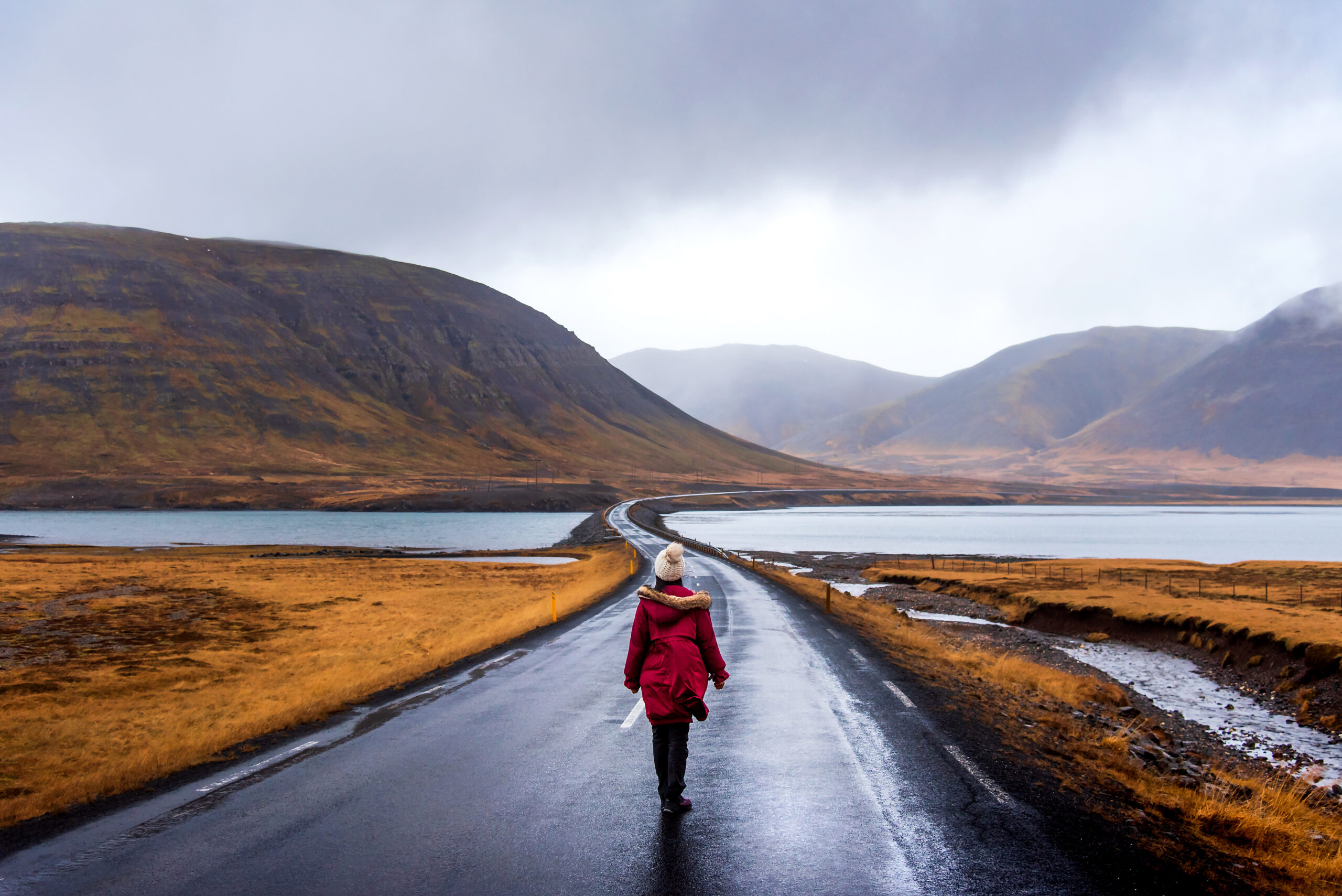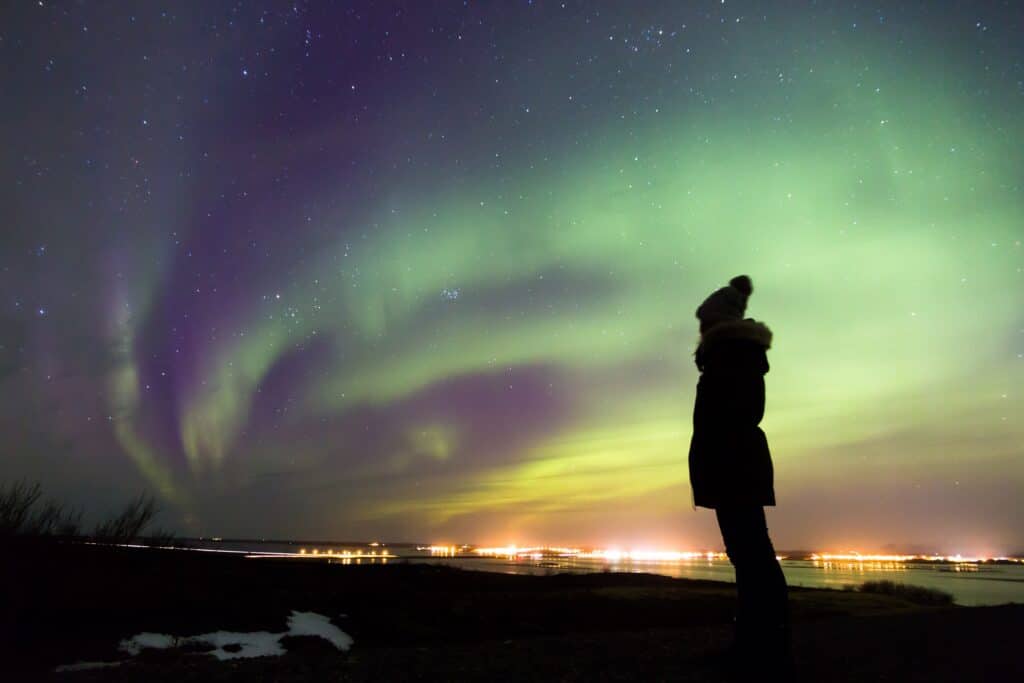
Iceland & Northern Lights
Iceland & Northern Lights
Luxury Women’s Tours is delighted to bring you yet another great destination: Iceland and the Northern Lights. Iceland is a Nordic Island country situated in the North Atlantic and Arctic Oceans. Situated to the west of the Scandinavian mainland, made up of primarily Norway, Sweden and Finland. Iceland is also one the most sparsely populated countries within Europe. Its capital city is Reykjavik, which houses about 36% of its population. Iceland is the home of incredible landscapes of geysers, glaciers, volcanos, hot springs and even lava fields. Along with the Northern Lights, it’s one of those ‘must visit at least once’ travel locations.
About Iceland
Iceland lies in a very active geologic area and has much to offer. It is certainly a country of contrast, from glaciers to thermal and volcanic activity. Additionally, it’s a contrast in that it is part of the region which has the world’s oldest democracy, and yet is modern in almost every way. Iceland had one of the very first Parliaments of the world. With a population of around 375,000 people (half of that of Alaska) it is notably one of the most meagerly populated countries. All Icelanders can access a website called Íslendingabók, where they can trace their heritage back to the Vikings.
Iceland’s economy is primarily based on fishing, fishing products and fish exports. It also has aluminum smelting and of course, it’s number one industry is tourism. Each year, usually around 2.2 million people visit this country, however notably 2020 it dropped to around 488,000.
Between North America and Europe, Iceland lies on a very active geologic border with intense contrast of climate, geography and culture. Whilst Iceland is not where Vikings originated, it certainly has a history of Vikings, as shown in its museums. Whilst Iceland’s people are integrated into the European mainstream, many Icelanders take care to preserve their customs, traditions and their language.
This is a land of natural beauty. Being so close to the Arctic Circle which nearly touches Iceland’s northern most peninsula, you’ll be definitely seeing (and potentially walking on) one of its glaciers. Its climate is called ‘maritime subarctic’; in other words, it’s pretty cold! Although having said that, in its summer months, which are July and August, it gets up to +15 degrees. In June, the sun rises just before 3am and sets just after 9pm! The peak of winter is somewhat a shorter day with only four hours of daylight, which is generally 11am to 3pm. Perhaps this is why Iceland is one of the countries that produces the most books per capita – they love to read.
A bit of a fun ‘fact’ (although it might be more rumour, than fact) is that 30-40% of Icelanders will not deny the existence of elves. We’ll leave you with that one to ponder. 😊
Tourist Spots
There are a number of excellent tourism spots to visit in Iceland … here are a list of just a few:
- Reykjavik – especially on the weekend for a very vibrant nightlife. There is also shopping, fantastic food, lively bars, and colorful buildings, just wanting for you to photograph.
- Abandoned farm ruins and fields of lava rock at Thingvellir National Park, which features Silfra Fissure, Gulfoss, Geysir and Öxarárfoss.
- To the north west of the capital, take a day trip to Snæfellsnes Peninsula.
- Landmannalaugar, or as is known ‘The People’s Pools’ which is full of hot springs. A great way to unwind after a day or hiking or sightseeing.
- An hour north east of the capital, you’ll enjoy waterfalls, lava fields, caves and streams.
- Fjadrargljufur Canyon is picturesque with moss-coated cliffs and a winding river.
- Kerid Crater is set behind the dark slopes of a collapsed volcano that surrounds it.
- Mount Kirkjufell is one of Iceland’s most photographed landmarks – which is saying a lot – there are many.
- One of the most unforgettable things to do in Iceland, this exciting experience sees you actually snorkel between the North American and Eurasian tectonic plates.
- Skogafoss for its thundering waters at a scale that is spectacular.
- Reynisfjara Beach is unusual with its inky black sand.
- There is whale watching tours in Faxafloi Bay.
- Blue Lagoon is another must be site.
- Be inspired by Snaefellsjokull Glacier or Vatnajokull Glacier – to name just a couple.
Northern Lights in Iceland
The northern lights, which are also called the Aurora Borealis, are the incredible visual result of solar particles entering the Earth’s magnetic field. They ionize high up in the atmosphere and it’s from this that we get the amazing colours, often green, but sometimes also you’ll see purples, reds, pinks, oranges, and blues. Reds are extremely rare and Iceland is only of the few countries you’ll spot any red.
Whilst winter is the coldest time to visit Iceland, it is the time of the year when you’ll see this spectacular natural light show. In fact, the best months to see the Northern Lights is December, January and February, although the season is technically from October to April. The rule of thumb is that the darker it is, the greater the vibrancy of the lights.
A great number of Iceland’s most spectacular natural sites are also prime places to see the Northern Lights. Some of the best and most notable spots include Thingvellir National Park to the south, Asbyrgi Canyon to the north, and Kirkjufell Mountain which is in the western region.
Things to Bring to Iceland
When you visit Iceland, there are some things you absolutely must pack.
- Sturdy Boots – whilst you might pack a pair of lighter weight boots or closed shoes for indoors, when you’re outside, you’ll want sturdy and heat rated boots – this is not the place for sandshoes, sandals, or lighter weight footwear.
- Layered Clothing – because you’re in a location which is used to the cold, almost all indoor locations are heated accordingly. Hotels, shops, restaurants all cater for the cold and once you step inside, it’s warm and toasty. For this reason, it’s important to layer. You’ll want your base layers to be thermal tops and leggings, with jumpers and a good quality coat, which is easy to take off.
- Gloves and beanie. Don’t forget your fingers. You can buy gloves which can be used with a mobile phone; makes it easy to snap all those amazing pics without having to remove your gloves. Remember also a beanie; we lose most of our body heat through our head; so be prepared.
- You may also want to pack windproof/waterproof coat, just in case the weather turns. Whilst many days are beautiful and sunny, it’s best to be prepared.
- Swimming Gear. Yep, don’t forget your swimsuit. Remember all those thermal activity, hot springs and hot tubs – you’ll want to enjoy a visit to them.
- Sunglasses & Sunscreen. Just because it’s cold, doesn’t mean you can’t burn. The bright sun is intensified by the ice and snow, so you’ll definitely want your sunglasses. If you want to avoid ‘raccoon eyes’ and not have white eyes and a tanned fan, also pack some sunscreen.
- Legal & Technology. Don’t forget of course your passport, driver’s license (even if you’re not driving, it’s ID), your mobile phone, a camera if that’s your preference, rather than your mobile, chargers for everything and don’t forget power adaptors.
As with all of Luxury Women’s Tours, we do all the work! We source the best places to go, the nicest accommodation and of course we do all the planning. All you’ve got to do is look forward to your next trip with Luxury Women’s Tours.
